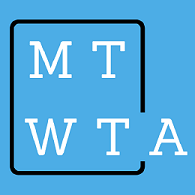The concepts of self-differentiated leadership and of crucial conversations both have, at their core, the idea of harnessing one’s emotional responses and of looking through, over, and beyond the emotions of oneself and others toward a larger goal. While both theories will provide assistance as I implement my innovation plan, the decentralized, teacher/learner-driven nature of the plan suggest that the crucial conversation methodology will be of more direct and immediate use.
Camp, explaining Friedman’s theory of differentiated leadership, posits that “effective leadership…is an emotional process of regulating one’s own anxiety,” and that a self-differentiated leader “is like the emotional immune system of an organization by being a non anxious presence…which influences others to take responsibility for themselves” (2010). Crucial Conversations outlines a dialogue process that constantly checks in on the emotional state of the participants, and explains methods for determining what the participants actually want out of the situation, how to make all parties feel safe in sharing information, and how to maintain the conversation even when participants begin to be ruled by their emotional state (2012).
While the former seems to focus more on rising above emotions, and the latter appears to devote a little more energy toward recognizing emotions as one navigates through them, both philosophies illustrate the importance of keeping emotional responses from entirely dictating one’s actions. Indeed, Grenny et al. give the very definition of a “crucial conversation” as a conversation involving opposing opinions when both emotions and stakes are high, recognizing the influence that emotions can have at these key moments (2012). Clearly, as long as we live in a society not populated entirely by machines, knowing how to deal with human emotion during the change process is going to be important.
What does this mean for my innovation plan? The idea of getting teachers to transform the way they teach, radically in some cases, is sure to check all of the crucial conversation boxes. One can argue that there are few situations with higher stakes than educating our children, and anyone who has spent any significant time among teachers can vouch that a) as a group, they carry a wide range of opinions regarding educational methods, and b) they are emotionally attached to those methods, because they are emotionally attached to their students and their work. What is the best way to navigate that potential minefield, in order to help my plan have the greatest chance of success?
There are two aspects of my innovation plan that I believe will need the greatest attention in this area, at least initially. My plan involves asking teachers to take two main steps: first, enrolling in a technology-assisted music course as a form of professional development, and second, bringing the lessons of that course into their own subject areas and classrooms. Because the first step is voluntary, and because it is my great hope that actually experiencing the concepts they are being asked to introduce will make teachers eager to take the second step, I believe that the key factors I will need to address are not any kind of active resistance to the plan, but rather apathy and what I think of as “innovation fatigue.”
Teachers are tired. Especially in today’s political and economic climate, many if not most teachers complain of constantly being asked to do more and more (often with less and less), and of being subjected to a near-incessant stream of initiatives, mandates, and directives from various sources, often with little or no input from the educators themselves, and with no clear picture of how these plans will actually benefit their students. Plans are introduced, implemented with wildly varying levels of training and support, and, after a few years of indifferent results, replaced by the next new idea (or worse, not replaced, but simply added to). A few years of this cycle of “innovate and forget” and soon many teachers become cynical about any kind of innovation plan, preferring instead to simply stick with what they know works (or at least what they’re familiar with) and wait for the educational flavor-of-the-month to go away. I think this type of jaded feeling is going to be the biggest factor in the need for crucial conversations as I try to implement my plan.
So what are these conversations going to look like? How am I going to talk to colleagues who aren’t following through with the plan (especially the second step, which is really the heart of the whole thing)? While all of the crucial conversation process is going to come into play, I believe the key parts of the crucial conversation methodology, in this case, will be the following:
- Start with Heart
- STATE My Path/Explore Others’ Paths
- Move to Action
Start with Heart
Keeping in mind what I really want is the pivotal first step. This is where keeping a close eye on my “why” is going to be of utmost importance. I don’t want teachers to implement my plan because it makes me look good or because I feel bad when they ignore what we’ve worked on together. I want them to implement my plan because, in my own earlier words, “By understanding and embracing the creative process, we understand how to better learn and grow in all areas of life” (Harris 2019). By remembering that I want all learners to have the benefit of this idea, I hope to be able to help teachers who aren’t quite buying into my plan see this goal as well. In the words of Sinek, “People don’t buy what you do, they buy why you do it” (2009). This will be the first step on the path toward helping these teachers toward the same “why.”
STATE My Path/Explore Others’ Paths
These two parts of the crucial conversation methodology are really about people understanding their own perceptions of others’ actions, and finding common ground. Facts are differentiated from opinion, and participants are able to acknowledge each other’s emotions and gain insight into how those emotions are driving action. In the case of teachers who haven’t yet bought into the innovation plan, this is my opportunity to share how I am witnessing and interpreting their apparent lack of acceptance of the plan goals, and for them to do the same, and for each of us to share information about the challenges we are facing in accomplishing what is more than likely a shared goal (after all, these teachers ostensibly started the plan because they were interested in improving their students’ learning experience, as well as their own).
Move to Action
The final, pivotal step of any crucial conversation addresses what happens when the conversation is over. What steps will these teachers take to put the lessons they learned themselves into practice for their own students? What will my role be in supporting them through this process? What will success look like? This part of the process can very easily move into 4DX territory, determining lead and lag measures and establishing norms of scoring and accountability (Covey, Huling, & McChesney 2012).
To return to and reframe the Crucial Conversations authors’ definition, a crucial conversation is really about resolving opposing opinions by examining strong emotions related to a high stakes issue (2012). Education is a high stakes business, driven by people with a great deal of emotional investment. It makes sense that being able to have effective, productive conversations will be of utmost importance to the success of my innovation plan.
REFERENCES
Camp, J. (2010). Friedman’s theory of differentiated leadership made simple [Video file]. Retrieved from https://www.youtube.com/watch?v=RgdcljNV-Ew&feature=youtu.be
Covey, S., Huling, J., & McChesney, C. (2012). The 4 disciplines of execution. London: Simon & Schuster UK Ltd.
Grenny, J., McMillan, R., Patterson, K., & Swizler, A. (2012). Crucial conversations: tools for talking when stakes are high. (2nd ed.). New York, NY: McGraw Hill.
Harris, B. (2019, January 28). I can get satisfaction [Blog post]. Retrieved from https://bryaneharris.blogspot.com/2019/01/i-can-get-satisfaction.html
Sinek, S. (2009). Start with why [Video file]. Retrieved from https://youtu.be/sioZd3AxmnE


